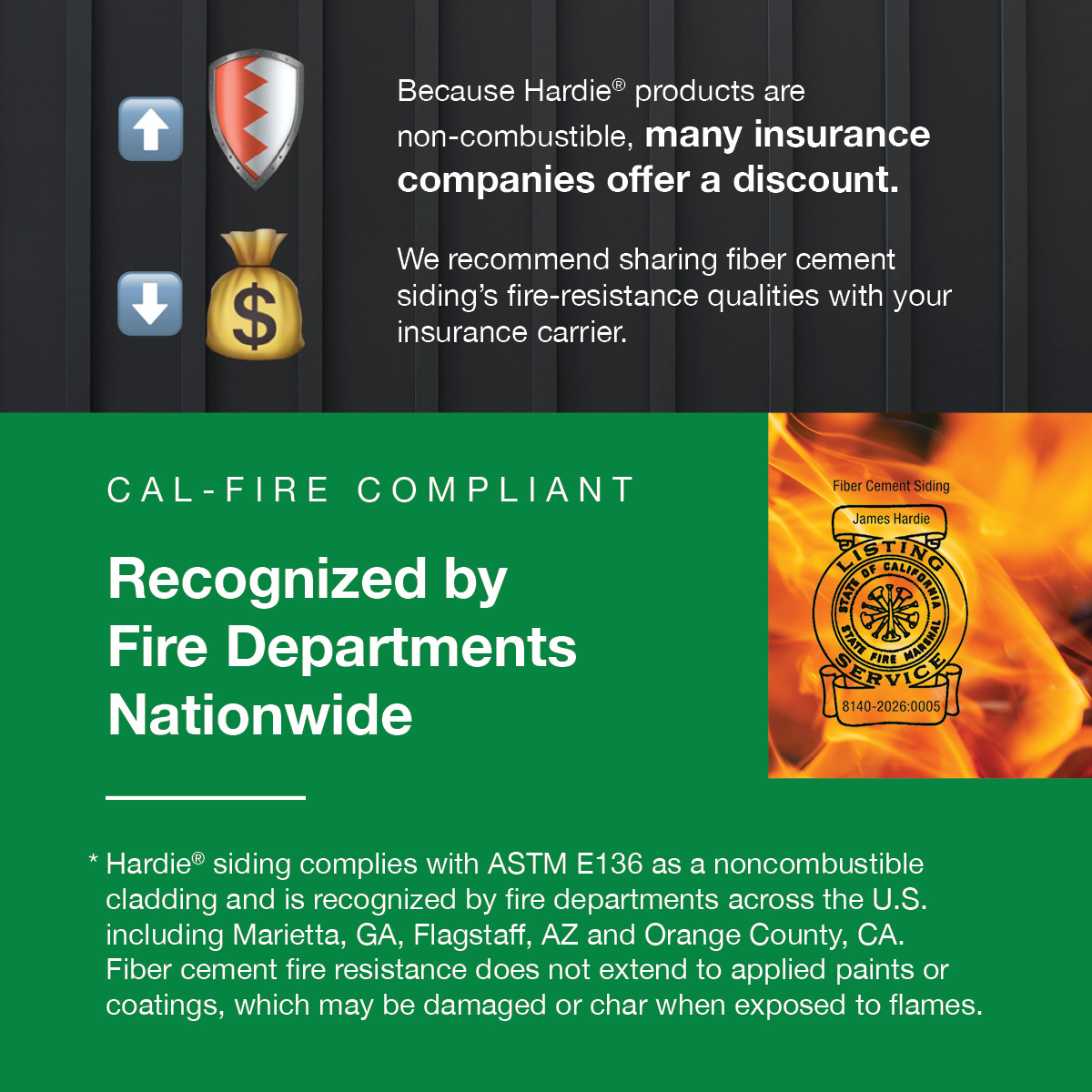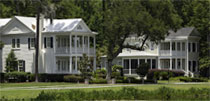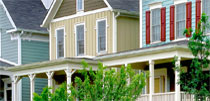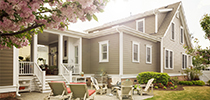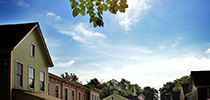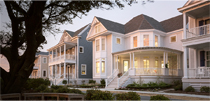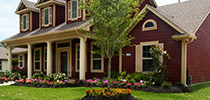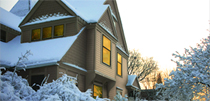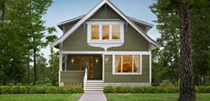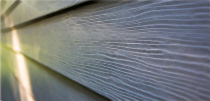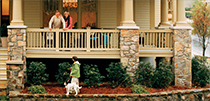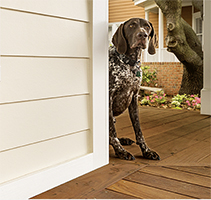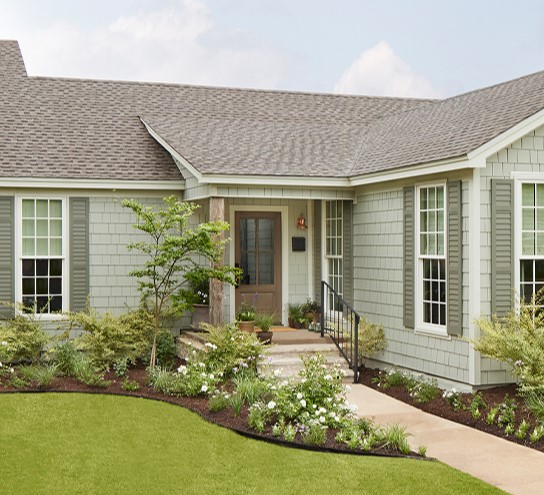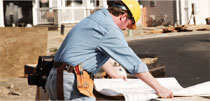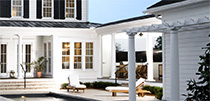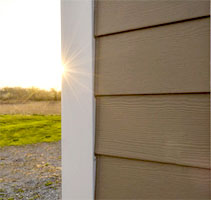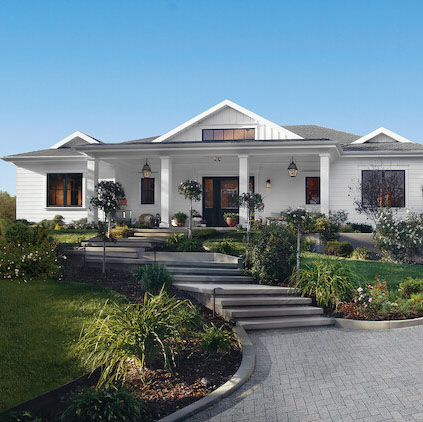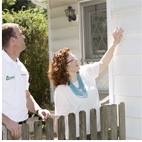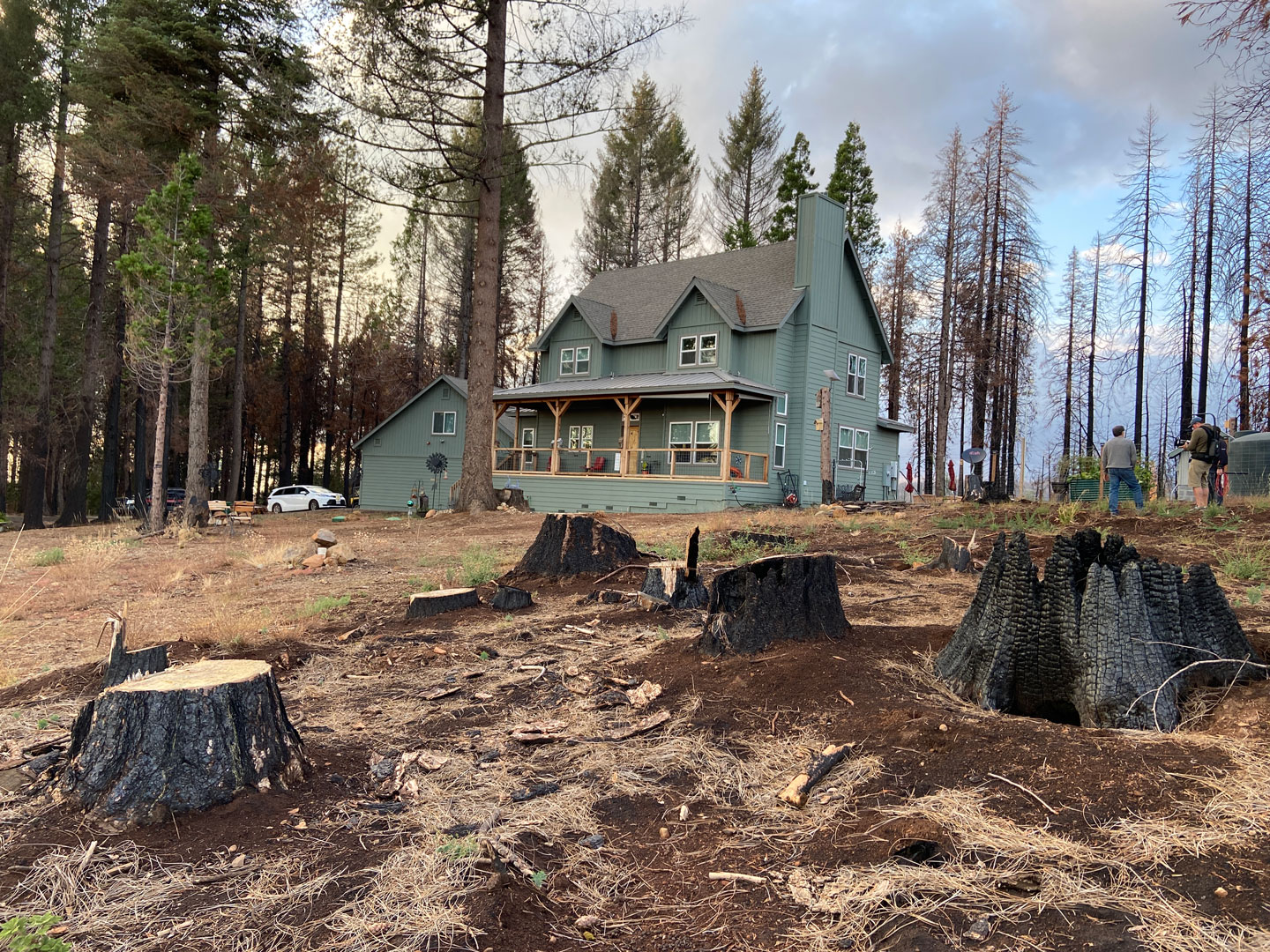
Two minutes. That’s how long you have to escape a fire after the alarm sounds in a typical modern home, according to the National Fire Protection Association. The best way to keep your family safe is to understand what causes and contributes to fires, how to prevent them, and how to safely escape a burning home. Here’s what you need to know.
“The only reason why we are alive today and that our own home wasn’t engulfed was thanks to your product,” writes Simone V., a homeowner and fire survivor. Another, Donna E., reflects on the condition of her home after a fire: “the siding held up beautifully. We were so impressed with how [the fire] actually burned the paint off on part of the house, but when we took the siding off, the plywood underneath was just perfect. The siding held up so well that the fire didn’t get inside.”
Even a building’s walls can quickly become fuel for a fire. “The type of material your home is made out of can affect how easily it catches fire and how quickly the fire spreads,” says John Smith, director of the Fire Risk Assessment Network. Non-combustible materials may leave your family with more time to escape.
The Hardie® Siding Difference
Once a fire starts, time is of the essence before it spreads to your home. Non-combustible siding, such as Hardie® fiber cement siding, can buy your family more time to get out safely while keeping your house intact. In fact, some homeowners say they owe their lives to Hardie® siding.
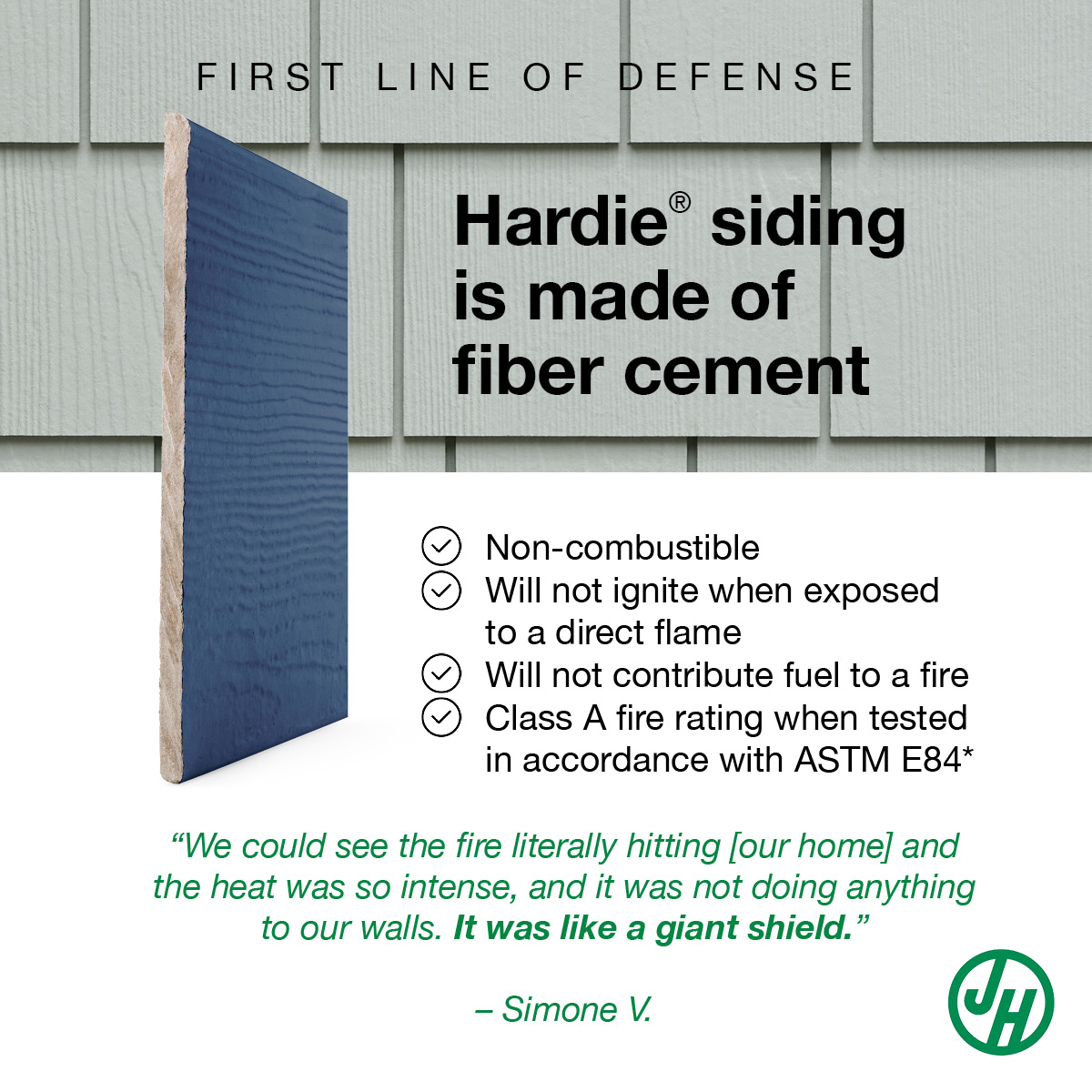
While fire burns through wood and melts vinyl immediately, Hardie® siding doesn’t ignite when exposed to a flame. In fact, many insurance companies offer discounts for homes built with Hardie® siding since it’s non-combustible and helps mitigate fire damage. When combined with certain Warnock Hersey and UL assemblies, the resulting wall construction can resist damage from heat and flames for up to an hour.
Hardie® siding has saved homes in a fire’s path of destruction. But even with the added protection of fiber cement siding, homeowners should still have a home escape plan and follow best practices for fire prevention.
The Importance of a Home Escape Plan
McKelvey says that while a home escape plan may seem like a basic solution, it’s a necessary precaution. During a fire, it may be difficult to see and breathe. You may not have time to communicate an escape route to your family. A proactive strategy is therefore essential to keeping everyone safe.
If possible, identify two exits in every room, and make sure the doors and windows can be easily opened. Have an outside meeting spot that everyone in the family knows about, and make sure your plan accommodates everyone in the home, including individuals with disabilities and pets. Finally, conduct a fire drill twice annually — once during the day, and once at night.
5 Tips to Prevent Home Fires and Wildfires
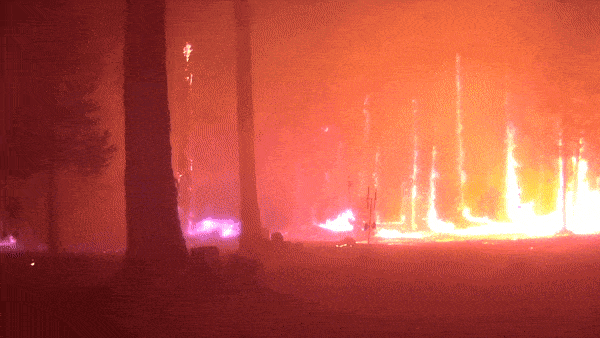
Know the Common Causes of Home Fires
Fires in the home are typically caused by unattended open flames — cooking accidents, candle fires, and falling asleep while smoking are all common. Even household items that produce heat without a flame, such as space heaters and hair straighteners, can be culprits. Don’t leave them unattended.
“Faulty wiring is another leading cause of fires,” says Smith. “If you have any old or damaged electrical cords, make sure to replace them as soon as possible. It's also a good idea to have your home's wiring checked by a professional every few years, just to be safe.” Check your water heater and sump pumps as well, and keep your dryer vent and chimney clean.
Test Your Smoke Alarms
Make sure to test your smoke alarms at least once a month, if not weekly. Every sleeping room should have a smoke alarm, and you should also install one outside each sleeping area on every level of your home. They should be interconnected so that all of them sound to alert everyone in the house.
Install a Sprinkler System
While smoke alarms can save lives, they do nothing to protect your home. Sprinkler systems go the extra mile. “One of the things we do know dramatically reduces the risk of home fire death and even damage to homes is having sprinklers in your home,” says McKelvey. Sprinklers also help keep response crews safe and limit the harmful environmental effects of a fire.
Keep Up with Your Exterior Maintenance
If you live in an area prone to wildfires, keep the immediate home ignition zone (five feet around your home) free of flammable vegetation. If possible, limit plants and trees within 100 feet of your home. You’ll also want to prune branches of large trees up to 10 feet from the ground and remove branches overhanging the home, porch, or deck. Don’t store anything flammable under decks or porches. And ensure emergency responders have clear access to your home and your house number is visible from the street.
Use Fire-Resistant Building Materials
To reduce damage from wildfires, use Class A fire-rated roofing products and dual-pane tempered glass windows when building or remodeling your home. The NFPA and FEMA also recommend fire-resistant siding, such as brick, plaster, stucco, or Hardie® fiber cement siding.
Download our Fire Prevention Infographic
